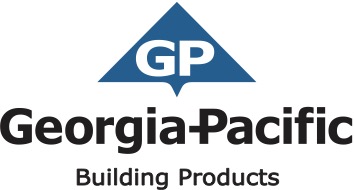Making Transitions: Keeping Air and Water Barriers Continuous
Integrated sheathing solutions help streamline detailing and installation
Sponsored by Georgia-Pacific Building Products | Peter J. Arsenault, FAIA, NCARB, LEED AP
There is no audio associated with this presentation.
Building envelopes need to create the four barriers needed as part of any building enclosure, namely water-resistive barriers (WRBs), air barriers (ABs), thermal barriers, and vapor retarders. Commonly, those are each thought of as independent products or systems that are easy to imagine across a smooth continuous plane in a wall or roof deck. However, actual construction isn’t completely smooth and continuous. There are places where different materials and assemblies meet, such as the transition from an above-grade wall to a concrete slab or foundation wall. There are also openings in most walls for windows, doors, and other features, meaning there is a transition of the barriers around those openings. The place where the roof meets the wall, particularly in a commercial building that may have a parapet wall, is another transition area where the continuity of the barriers can be compromised if they are not designed, detailed, and installed correctly. In this course, we will focus on these three transition areas in particular: wall to foundation, openings, and roof to wall. Further, recognizing the innovations and risk mitigation needed in building envelope design, we will also look at the latest advances in all-in-one, integrated gypsum sheathing that include WRB and AB systems during manufacturing as alternatives to field-applied water- and air-barrier systems. These integrated systems have been shown to reduce improper field installations, speed up installation, and save time and money during construction. As such, greater reliability and less risk have been found in using such integrated solutions compared to separate field-applied solutions.

Photo courtesy of Georgia-Pacific Building Products
Peter J. Arsenault, FAIA, NCARB, LEED AP, is a nationally known architect, consultant, continuing education presenter, and prolific author advancing building performance through better design. www.linkedin.com/in/pjaarch, www.pjaarch.com
LEARNING OBJECTIVES
- Identify the role that building construction transitions play (roof to wall, wall to foundation, and wall to disparate materials) in achieving a well-designed building envelope, including conditions that contribute to failure.
- Recognize the points in the design process where construction transitions need to be addressed and specific areas that required detailed attention.
- Review the conditions that promote movement of bulk water, moisture, or vapor drive and how those conditions impact construction transitions, specifically at roof-to-wall, wall-to-foundation, and wall-to-disparate-material locations.
- Describe the importance of maintaining the continuity of water-resistive barriers and air barriers across construction transitions, and assess integrated sheathing products and systems as a means to achieve that continuity.
ALL CREDITS
As an IACET Accredited Provider, BNP Media offers IACET CEUs for its learning events that comply with the ANSI/IACET Continuing Education and Training Standard.
This course is approved as a Structured Course
This course can be self-reported to the AANB, as per their CE Guidelines
Approved for structured learning
This course can be self-reported for Learning Units to the Architectural Institute of British Columbia
Approved for Core Learning
This course can be self-reported to the NLAA
Course may qualify for Learning Hours with NWTAA
Course eligible for OAA Learning Hours
This course is approved as a core course
Georgia-Pacific Building Products has a legacy of creating strong, durable, sustainable building materials from exterior sheathing products to drywall in walls and ceilings to industry leading roof products and supporting products from lumber to subfloors to fire doors. We help members of the building community build quality commercial and residential construction projects all over the world. GP Building Products is the largest producer of structural wood panels (plywood and OSB) in North America and is a leading producer of gypsum building products, lumber and composite panels.
We support commercial and residential architects, designers, building material dealers, contractors and builders with tools, education and supporting resources that help the building community advance their knowledge, hone their craft, and make the best product decisions for their projects.
Originally published in Architectural Record
Subscribe to Architectural Record
Originally published in January 2019









